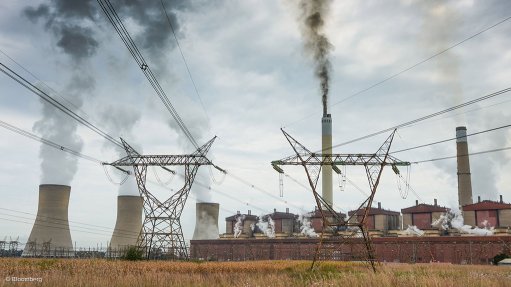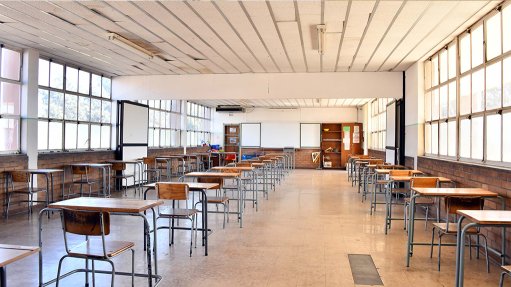Frankly disgusted
Barbara Creecy is Forestry, Fisheries and the Environment Minister. One of the main functions of her department is to deal with environmental-impact assessments (EIAs). These are required when some organisation wants to develop or build on land that is environmentally sensitive – where building or developing will be bad for the environment.
So, what happens, or what is supposed to happen, is that a firm of environmental consultants employs a whole lot of experts in various fields, for example ornithology, groundwater, fauna and flora, and so on, and they evaluate the area to determine the potential effect of the development. Will it be negative or positive? Will it be forever, or can it be reversed? Can the effect be made less serious? And so on. The document thus generated is known as an EIA. In this environment, we (my consulting practice) are occasionally appointed to determine the effect of noise on the environment as may result from the project. The environmental consultants gather all the expert opinions and send them to the Department of Forestry, Fisheries and the Environment (DFFE), which then grants an environmental authorisation (EA), which allows the project to proceed. Or the department may reject the EA. This process does not sound flawed, but it is in fact so; the clients (and the environmental consultants) keep the project as secret as possible, the consultants are paid very well by clients who have the expectation that the environmental effect will be very little or, at least, found to be so. The whole EIA is then sent to the DFFE and published for public comment. The time given by the DFFE is not enough for effective public comment. The DFFE is supposed to satisfy itself that the EIA has indeed been compiled by experts. I don’t think, in my experience, the department does this at all.
The result is that the EIA gets the EA and the project proceeds, which then has its effect on the environment. Now, to the nub of the matter. The fishing village of Paternoster is 145 km north of Cape Town, at Cape Columbine, between Saldanha Bay and St Helena Bay. It is very beautiful in a West Coast sort of way and the DFFE has granted authorisation for the construction of a wind farm consisting of 45 wind turbines, each with a hub height of 120 m and a blade-tip height of 165 m. To compare, the tallest building in Cape Town is 135 m. Putting 45 turbines in and around Paternoster will change its beautiful West Coast appearance more than somewhat, especially at night, when, amid the crystal constellation of the stars above, there will be 45 sets of red-flashing aircraft-warning lights on the turbine towers. I am very much in love with Paternoster, all of which started when I was young.
About four months ago, when I heard of the wind turbine plan, I was given the task of reviewing the noise-impact assessment of the main impact assessment document. I found that it was flawed in many aspects, not the least being that it recorded that noise levels from some of the turbines would exceed the levels set by the Western Cape noise control regulations. So, I wrote down all my findings and, the DFFE having granted the EA, I filled out a form of appeal against the EA, together with 16 other parties that were appealing, referred to as ‘appellants’. I have now been sent an email from the DFFE, with an attached letter from Creecy in which she writes that she dismisses the appeals and grants the EA for the project. But the reasons and her reasoning do remind me of the behaviour of the National Party government in the 1980s, when they granted authorisation for many projects which trashed the environment – generally to push a financial- political agenda. So, what is wrong here? I am afraid you will have to wait for next week’s instalment.
Article Enquiry
Email Article
Save Article
Feedback
To advertise email advertising@creamermedia.co.za or click here
Comments
Press Office
Announcements
What's On
Subscribe to improve your user experience...
Option 1 (equivalent of R125 a month):
Receive a weekly copy of Creamer Media's Engineering News & Mining Weekly magazine
(print copy for those in South Africa and e-magazine for those outside of South Africa)
Receive daily email newsletters
Access to full search results
Access archive of magazine back copies
Access to Projects in Progress
Access to ONE Research Report of your choice in PDF format
Option 2 (equivalent of R375 a month):
All benefits from Option 1
PLUS
Access to Creamer Media's Research Channel Africa for ALL Research Reports, in PDF format, on various industrial and mining sectors
including Electricity; Water; Energy Transition; Hydrogen; Roads, Rail and Ports; Coal; Gold; Platinum; Battery Metals; etc.
Already a subscriber?
Forgotten your password?
Receive weekly copy of Creamer Media's Engineering News & Mining Weekly magazine (print copy for those in South Africa and e-magazine for those outside of South Africa)
➕
Recieve daily email newsletters
➕
Access to full search results
➕
Access archive of magazine back copies
➕
Access to Projects in Progress
➕
Access to ONE Research Report of your choice in PDF format
RESEARCH CHANNEL AFRICA
R4500 (equivalent of R375 a month)
SUBSCRIBEAll benefits from Option 1
➕
Access to Creamer Media's Research Channel Africa for ALL Research Reports on various industrial and mining sectors, in PDF format, including on:
Electricity
➕
Water
➕
Energy Transition
➕
Hydrogen
➕
Roads, Rail and Ports
➕
Coal
➕
Gold
➕
Platinum
➕
Battery Metals
➕
etc.
Receive all benefits from Option 1 or Option 2 delivered to numerous people at your company
➕
Multiple User names and Passwords for simultaneous log-ins
➕
Intranet integration access to all in your organisation

















